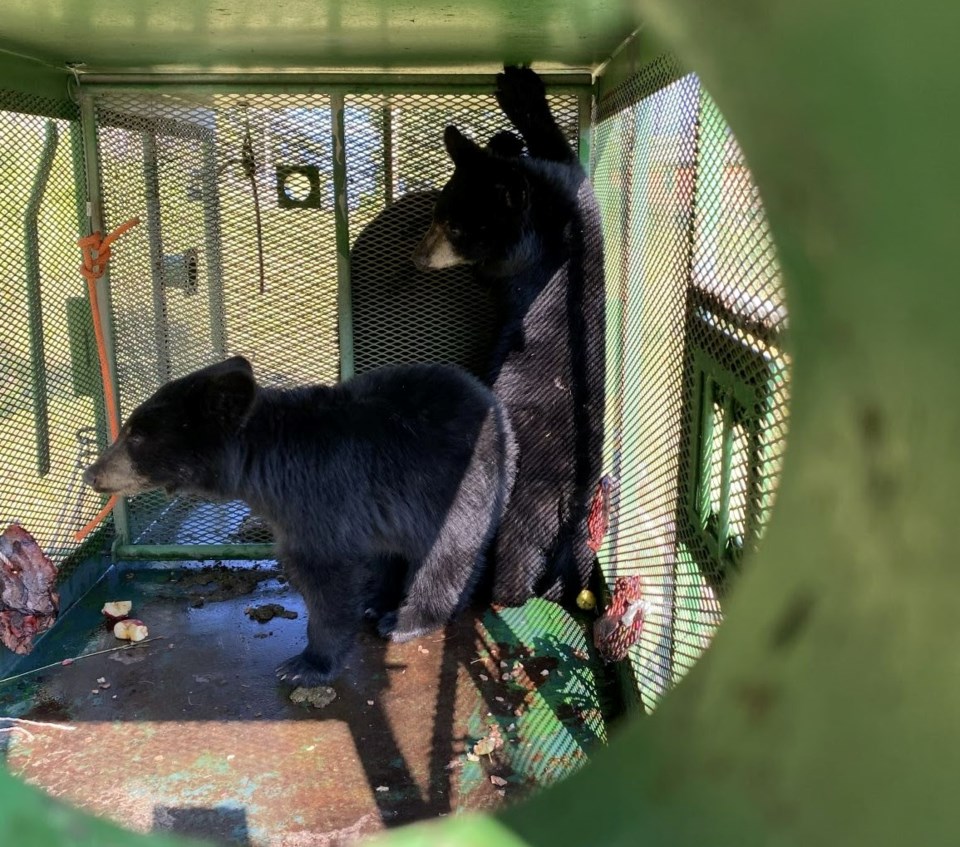Scott Hayes, Local Journalism Initiative Reporter | [email protected]
If you thought bears eating the fruit off your tree was bad enough, consider the plight of the person who called in the municipalityÔÇÖs last ÔÇťbear in townÔÇŁ report of the season.
A black bear broke into their garage to get at a food source being stored there on Oct. 23.
All told, there were a dozen bears that were drawn to town by attractants in yards and non-native fruit trees.
James McCormick, human wildlife conflict supervisor with Parks Canada, said that it was a busy season, but those days are in the past.
ÔÇťIt seems to be definitely quieting down for us now. I suspect all the bears have found somewhere to den up for the winter now,ÔÇŁ he said.
ÔÇťWe had a nice long fall. Most of the bears we were working with seem to have done a pretty good job this fall; they seem to look pretty healthy. Hopefully, that's a good sign for them coming up next spring.ÔÇŁ
Using a borrowed family bear trap from Banff National Park, Parks staff relocated two family groups of black bears this autumn. They had become habituated to the fruit trees as a food source in the townsite.
Both groups involved a mama bear with her two cubs of the year. The first family was released south down Highway 93 where it most likely moved into the backcountry in the area. The second family was also released in a similar location and was later observed on a wildlife camera heading up towards the Tonquin Valley.
Neither group came back into town, McCormick said. Neither did the black bear that broke into the garage. It was also trapped and relocated to the south end of the park.
Parks officials say that trapping, immobilization and release is a last resort. It is stressful and risky for bears, particularly cubs.
A pair of grizzly siblings that was spotted in various yards throughout town early in the spring was also relocated to the south end of the park. By the middle of the summer, the pair had split up with the male staying in the southeast corner of Jasper National Park while the female moved farther south into Banff National Park.
Which one is easier to remove?
Dealing with the bears was one thing; dealing with the attractants is another.
ÔÇťIn co-operation with the residents and the businesses, we removed over 100 trees,ÔÇŁ McCormick said. ÔÇťThat's really good. We were very happy that we're moving in the right direction.ÔÇŁ
Some of those trees were removed from the Jasper Park Lodge site, which also saw numerous bear reports.
Now that summer 2022 is behind them, Parks Canada is looking ahead to making further progress on that front for 2023.
This winter, Parks will be working with the municipality and residents to come up with a plan to further reduce the fruit tree attractants in the townsite.
ÔÇťThat's one of our primary agendas: to stop giving bears a reason to come into town. Food in the fall is one of those reasons,ÔÇŁ McCormick said. ÔÇťIf we remove or reduce the ability for bears to get to fruit trees, we think that'll help really alleviate this issue.ÔÇŁ
While the bears hibernate, it is still everyoneÔÇÖs responsibility to stay safe in wild animal country. Parks Canada recommends that people, especially those walking their dogs, continue to carry bear spray in case of potential encounters with wolves or cougars.
contains other wildlife safety tips for any time of the year.




